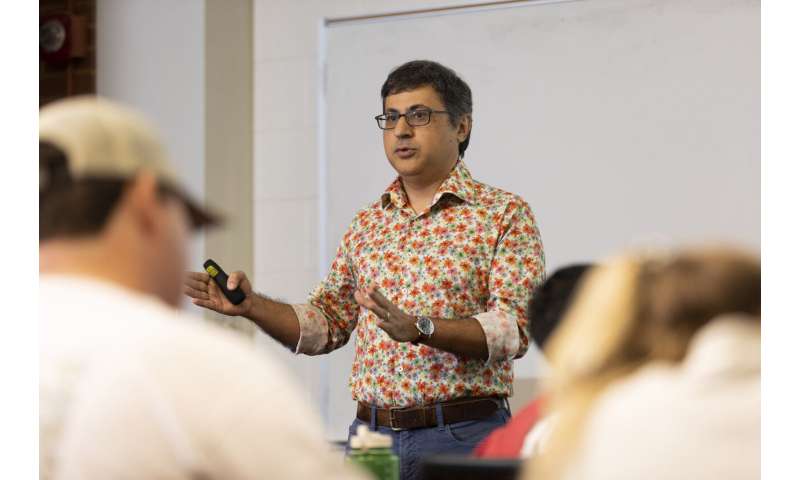
Achieving herd immunity to COVID-19 is an impractical public health strategy, according to a new model developed by University of Georgia scientists. The study recently appeared in Proceedings of the National Academy of Sciences.
Controlling COVID-19 has presented public health policymakers with a conundrum:
How to prevent overwhelming their health care infrastructure, while avoiding major societal disruption? Debate has revolved around two proposed strategies. One school of thought aims for “suppression,” eliminating transmission in communities through drastic social distancing measures, while another strategy is “mitigation,” aiming to achieve herd immunity by permitting the infection of a sufficiently large proportion of the population while not exceeding health care capacity.
“The herd immunity concept is tantalizing because it spells the end of the threat of COVID-19,” said Toby Brett, a postdoctoral associate at the Odum School of Ecology and the study’s lead author. “However, because this approach aims to avoid disease elimination, it would need a constant adjustment of lockdown measures to ensure enough—but not too many—people are being infected at a particular point in time. Because of these challenges, the herd immunity strategy is actually more like attempting to walk a barely visible tightrope.”
This study carried out by Brett and Pejman Rohani at the University of Georgia’s Center for the Ecology of Infectious Diseases, investigates the suppression and mitigation approaches for controlling the spread of SARS-CoV-2, the virus that causes COVID-19.
While recent studies have explored the impacts of both suppression and mitigation strategies in several countries, Brett and Rohani sought to determine if and how countries could achieve herd immunity without overburdening the health care system, and to define the control efforts that would be required to do so.

They developed an age-stratified disease transmission model to simulate SARS-CoV-2 transmission in the United Kingdom, with spread controlled by the self-isolation of symptomatic individuals and various levels of social distancing.
Their simulations found that in the absence of any control measures, the U.K. would experience as many as 410,000 deaths related to COVID-19, with 350,000 of those being from individuals aged 60-plus.
They found that using the suppression strategy, far fewer fatalities were predicted: 62,000 among individuals aged 60-plus and 43,000 among individuals under 60.
If self-isolation engagement is high (defined as at least 70% reduction in transmission), suppression can be achieved in two months regardless of social distancing measures, and potentially sooner should school, work and social gathering places close.
When examining strategies that seek to build herd immunity through mitigation, their model found that if social distancing is maintained at a fixed level, hospital capacity would need to greatly increase to prevent the health care system from being overwhelmed. To instead achieve herd immunity given currently available hospital resources, the U.K. would need to adjust levels of social distancing in real time to ensure that the number of sick individuals is equal to, but not beyond, hospital capacity. If the virus spreads too quickly, hospitals will be overwhelmed, but if it spreads too slowly, the epidemic will be suppressed without achieving herd immunity.
Brett and Rohani further noted that much is unknown about the nature, duration and effectiveness of COVID-19 immunity, and that their model assumes perfect long-lasting immunity. They cautioned that if immunity is not perfect, and there is a significant chance of reinfection, achieving herd immunity through widespread exposure is very unlikely.
“We recognize there remains much for us to learn about COVID-19 transmission and immunity, but believe that such modeling can be invaluable in so-called ‘situational analyses,'” said Rohani. “Models allow stakeholders to think through the consequences of alternative courses of action.”
Trippe Ross, University of Georgia

